Just because it is fall doesn’t mean you need to give up on your garden. On the contrary, some plants do best when they get put in the ground during cooler weather. That is good news for Ohio gardeners, who have shorter growing seasons. Since the state lies right in USDA Hardiness Zones 5 and 6, it is sometimes difficult to grow everything. Thankfully, as long as you capitalize on the full growing year, you can expand your garden tremendously. And we are here to help. Below are the 9 best things to plant in Ohio in October.
1. Chokecherry

Chokecherry trees belong to the rose family and are a beacon for birds and butterflies.
©iStock.com/Elenakirey
This magnificent tree belongs to the Rosaceae (rose) family and grows best in USDA Hardiness Zones 2 to 7. Typically, chokecherry (Prunus virginiana) trees will reach anywhere between twenty and thirty feet tall. They do take a few years to get established before they reach their full potential. However, if you purchase a young chokecherry tree and plan to plant it in October in your Ohio garden, you may get rewarded with blossoms the following spring.
The white, fragrant flowers bloom between April and May. They attract loads of butterflies and birds, so they are well worth the care and attention. This tree is drought-tolerant and will happily grow in nearly any soil type.
2. Hawthorn

Hawthorn trees also belong to the rose family, and they produce fruit that many animals love to feast on.
©Vika Malina/Shutterstock.com
Hawthorn, or thornapple (Crataegus phaenopyrum), is another Roseaceae (rose) family member. This deciduous tree thrives in USDA Hardiness Zones 4 to 8, making it the ideal addition to your Ohio garden. Be sure to leave plenty of room for this beautiful tree, which reaches up to 35 feet tall at maturity. One of the best times to plant your new hawthorn tree is in October before the ground freezes. Doing so will ensure it can start developing a solid root system. Unfortunately, you will need to wait to appreciate hawthorn in all its glory. The edible berries don’t show up until the fall. But in the meantime, the local pollinators and birds will show up in droves!
Plant your hawthorn in soil with good drainage and high organic matter content. It will need full to partial sun to thrive. Beyond that, it is a relatively low-maintenance addition to your yard or garden.
3. Hyacinth

Hyacinth bulbs are the perfect addition to any fall Ohio garden.
©Kazakov Maksim/Shutterstock.com
While hyacinth (Hyacinthus) flowers are significantly smaller than the previous two options, they are an ideal choice to plant in Ohio in October. Getting their bulbs in the ground before the first freeze will ensure you get to enjoy a stunning floral display when the flowers bloom in the spring. You can expect blossoms in red, pink, blue, white, orange, yellow, or purple. They thrive in full or partial sun in USDA Hardiness Zones 3 to 9.
Each flower stands roughly ten inches tall and produces clusters of fragrant blossoms. Hyacinths are ideal for hedges, borders, and walkways (or anywhere you want beautiful blooms). Mulch the bulbs well to protect them from freezes and only offer moderate water. They do not like to get waterlogged.
4. Japanese Meadowsweet
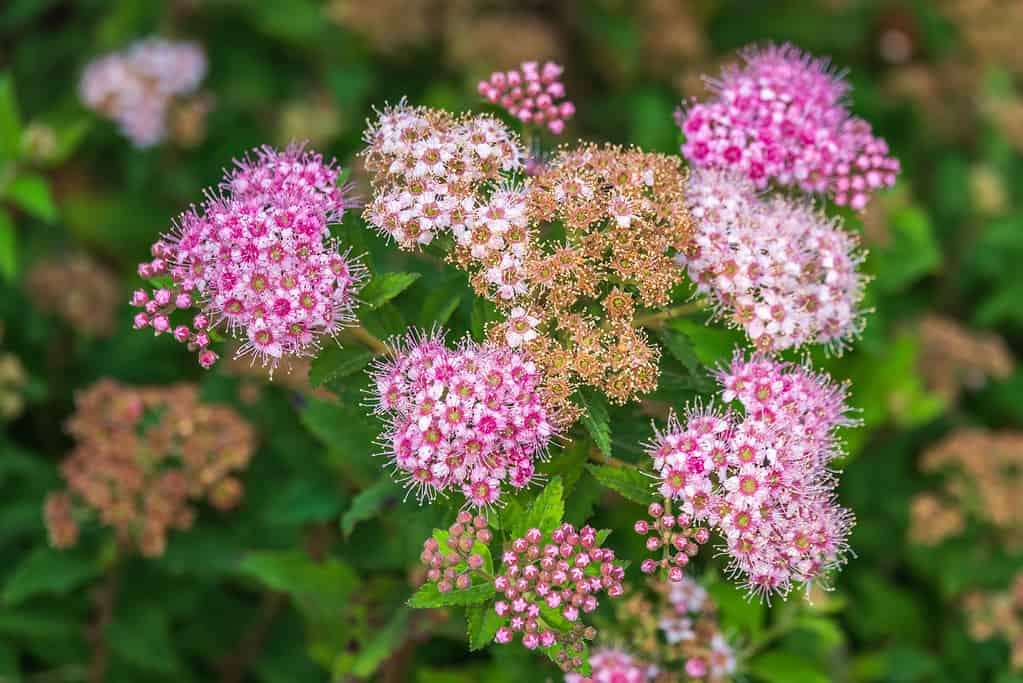
Delicate Japanese meadowsweet flowers are adored by butterflies, so you can enjoy watching those tiny friends while admiring your flowers.
©Dmitry Potashkin/ via Getty Images
Japanese meadowsweet (Spiraea japonica) is a deciduous shrub that is cold and hardy in zones 3 to 8. It is a member of the Rosaceae (rose) family. This low-maintenance shrub blossoms in mid-summer. So, planting it in the fall ensures proper root development and an amazing summer bloom. It reaches up to six feet high and seven feet wide at maturity. Enjoy the stunning pink blossoms while simultaneously watching the butterflies that will flock to it.
Plant your Japanese meadowsweet in a location that receives full sun. This amazing plant is drought-tolerant, deer-tolerant, and poor soil. Plan plenty of space for this dense shrub. And keep its flowers blooming with occasional dead-heading.
5. Kale
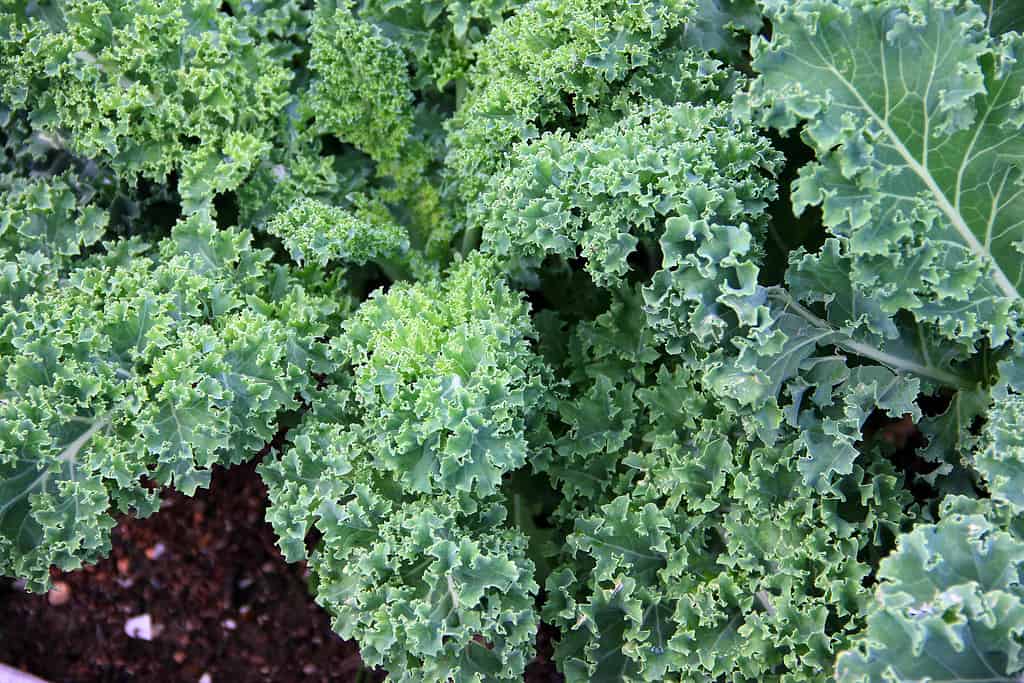
Kale is a cold-hardy crop that will grow well in Ohio’s fall and winter climates.
©/ via Getty Images
An edible option to plant in Ohio in October is kale (Brassica oleracea var. sabellica). This cold-hardy green can survive through almost any kind of weather. It is packed with nutrition and makes a fantastic addition to soups, salads, and smoothies. Kale belongs to the cruciferous family of vegetables, most of which are also cold-hardy. As long as you plant this tasty green before the ground freezes, you can get a bountiful harvest for at least a month (if not more). Cover your plants with a frost blanket during deep freezes to protect the leaves.
6. Lettuce
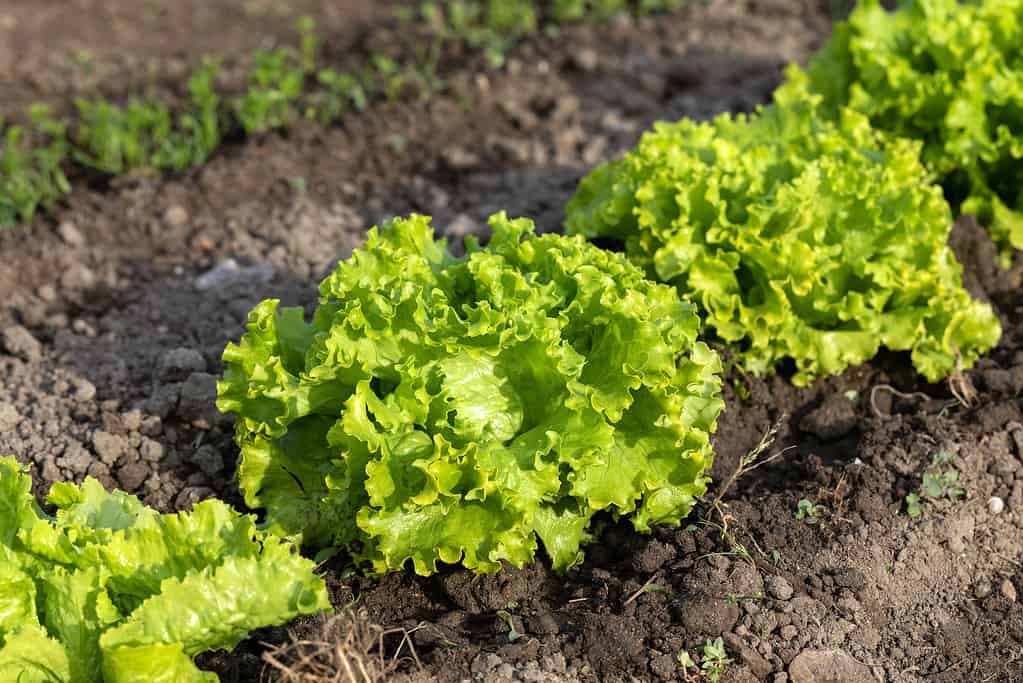
Some lettuce varieties mature quickly so that Ohio gardeners can enjoy a longer harvest.
©Thomas Pajot/iStock via Getty Images
What is better than walking out to your garden to harvest your own salad greens? And the good news is that, even though summer is over, that benefit doesn’t have to end. Many lettuce varieties are either short-season, so even if you plant them in Ohio in October, you can still get a good harvest. It is important to check the maturity dates on your lettuce. You may lose varieties that take longer to reach peak maturity. However, you can also consider growing them as baby greens if there is one you truly enjoy.
7. Mums
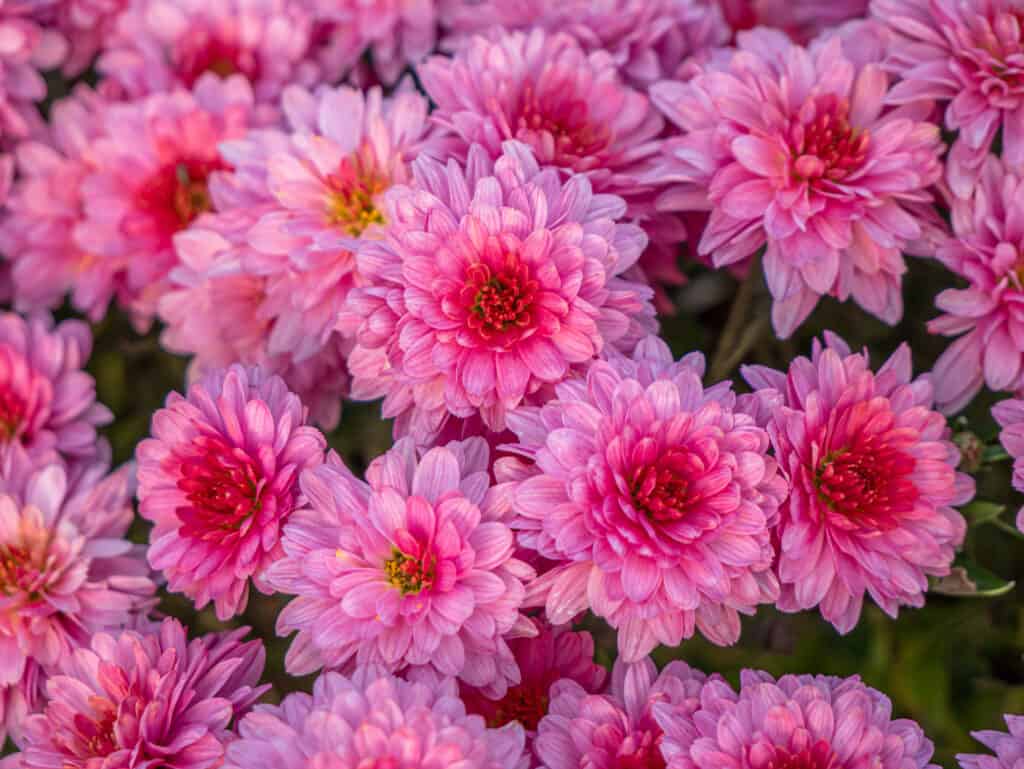
The beauty of mums and their easy care make these lovely flowers popular among gardeners.
©Volodymyr Yakovyna/Shutterstock.com
A perennial favorite among gardeners is mums (Chrysanthemum indicum). These beautiful flowers bring delight and joy wherever they get planted. They belong to the Asteraceae (daisy) family and have both annual and perennial species. Look for hardy mums which will survive year after year. They will grow well in zones 4 through 8, making them an ideal choice for Ohio gardens! You can find mums in several colors, including red, pink, tan, gold, white, and purple. Their blossoms arrive in the summer and typically last through the fall. So, if you get the bulbs in the ground this fall, you will get a beautiful treat before you know it.
Mums make a fantastic ground cover and can tolerate partial shade. Plant them in an area with high organic matter and good drainage. Then, watch your flowers thrive!
8. Pansies

Pansies are a wonderful addition to any Ohio garden since they are beautiful, edible, and have medicinal properties.
©Ken Kojima /Shutterstock.com
Another beautiful flower to plant in Ohio in October is pansies (Viola tricolor). They can be grown as annuals, biannuals, or perennials in USDA Hardiness Zones 2 to 9 and belong to the Violaceae (violet) family. These lovely flowers reach approximately 10 inches tall and 12 inches wide. Their stunning blossoms are edible and have medicinal uses.
Pansies thrive in moderate soil and full sun. Since it grows well in nearly every environment, you can add them to any part of your landscaping. Plant them in October, then sit back and wait for their beautiful blossoms the following spring. The flowers arrive in a multitude of colors and attract endless pollinators.
9. Spinach
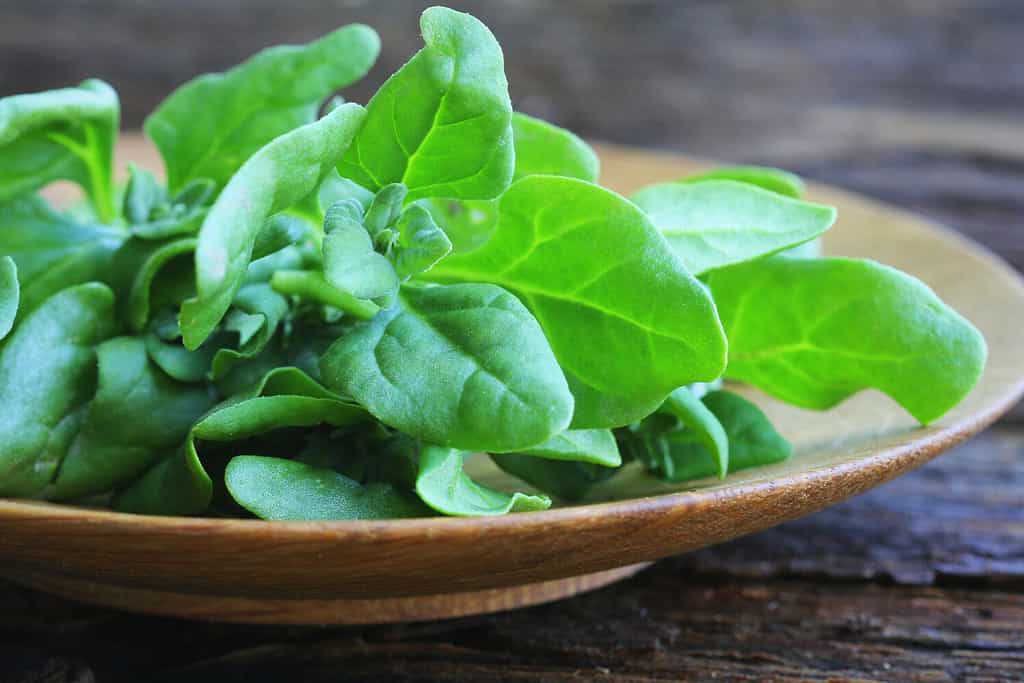
Spinach is another great vegetable you can plant in October.
©vaivirga/Shutterstock.com
Another vegetable you can plant in Ohio in October is spinach (Spinacia oleracea). Most varieties reach maturity quickly. So you can get a solid harvest before deep freezes arrive. Additionally, spinach is cold-hardy and can handle early frosts and light freezes. Feel free to plant extra spinach plants because the leaves store well. You can dehydrate or freeze them.
Summary of the 9 Best Things to Plant in Ohio in October
| Number | Plant | Scientific Name |
|---|---|---|
| 1 | Chokecherry | Prunus virginiana |
| 2 | Hawthorn | Crataegus phaenopyrum |
| 3 | Hyacinth | Hyacinthus |
| 4 | Kale | Brassica oleracea var. sabellica |
| 5 | Lettuce | Lactuca sativa |
| 6 | Mums | Chrysanthemum indicum |
| 7 | Pansies | Viola tricolor |
| 9 | Spinach | Spinacia oleracea |
The photo featured at the top of this post is © Sergei Mishchenko/Shutterstock.com
Thank you for reading! Have some feedback for us? Contact the AZ Animals editorial team.







